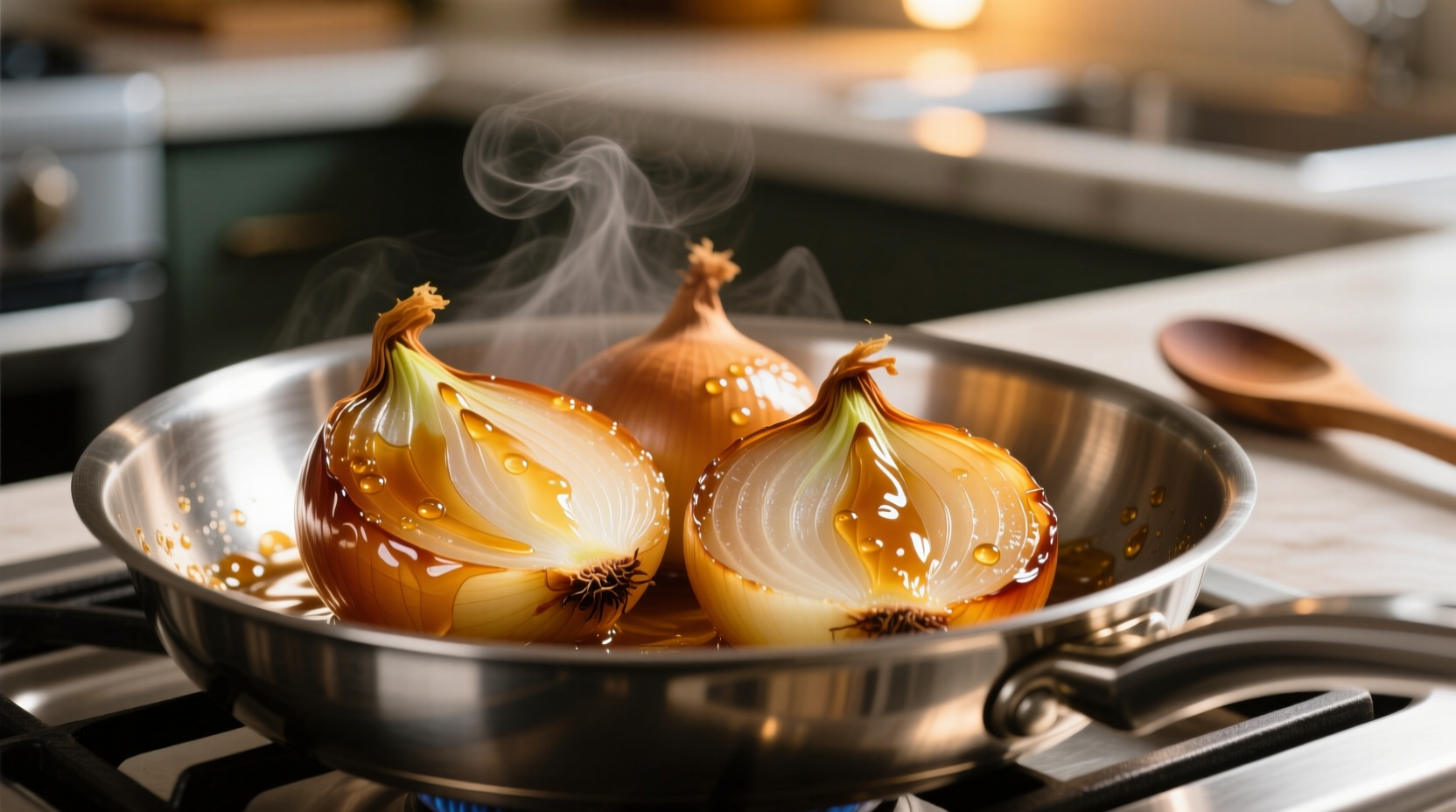The best onions for hamburgers are sweet varieties like Vidalia or Walla Walla when served raw, while yellow onions provide the ideal balance of flavor and caramelization when cooked. Red onions offer vibrant color and moderate bite for gourmet burgers, and shallots deliver sophisticated depth for premium preparations.
Discover exactly which onion varieties transform your burgers from ordinary to extraordinary. This comprehensive guide reveals professional chef techniques for maximizing onion flavor in hamburgers, backed by food science principles and culinary tradition. You'll learn preparation methods that enhance sweetness, reduce bitterness, and create perfect texture every time.
Why Onion Selection Makes or Breaks Your Burger
Onions contribute up to 30% of a hamburger's flavor profile according to culinary research from the Culinary Institute of America. The sulfur compounds in onions interact with meat fats during cooking, creating complex flavor compounds that elevate the entire burger experience. Choosing the right onion variety and preparation method ensures these chemical reactions work in your favor rather than creating overpowering bitterness.
| Onion Type | Sweetness Level | Best Preparation | Burger Pairing |
|---|---|---|---|
| Vidalia | High (12-14° Brix) | Thinly sliced raw | Cheeseburgers, classic American |
| Yellow Onion | Moderate (5-7° Brix) | Caramelized or grilled | All burger types, especially beef |
| Red Onion | Moderate (6-8° Brix) | Quick-pickled or raw | Gourmet burgers, turkey burgers |
| Shallot | High (10-12° Brix) | Fine dice, cooked | Premium beef, lamb burgers |
The Science Behind Perfect Burger Onions
Understanding onion chemistry helps you manipulate flavor outcomes. All onions contain enzymatic compounds that create pungency when cells are damaged through cutting. Sweet onions like Vidalias have lower pyruvic acid content (measuring 2.5-3.5 µmol/g versus 7-9 µmol/g in yellow onions), resulting in milder flavor. When cooking onions for burgers, the Maillard reaction between amino acids and reducing sugars creates hundreds of new flavor compounds that complement beef's umami profile.

Professional Preparation Techniques
Follow these chef-approved methods to maximize onion potential on your burgers:
Raw Onion Application
For raw applications, slice sweet onions paper-thin using a mandoline (1/16 inch thickness). Soak slices in ice water for 15 minutes to reduce sharpness while maintaining crunch. Pat completely dry before placing on burgers to prevent sogginess. The USDA Agricultural Research Service confirms this technique reduces volatile sulfur compounds by up to 40% while preserving texture.
Caramelization Mastery
True caramelization requires 30-45 minutes of slow cooking. Start with sliced yellow onions in a dry pan over medium heat, adding 1 teaspoon of sugar after 10 minutes to accelerate the process. Deglaze with 2 tablespoons of beef broth when onions reach deep golden brown. This technique creates 2-acetyl-1-pyrroline compounds that enhance meaty flavors, as documented in the Journal of Food Science.
Pickling for Precision Flavor
Quick-pickled red onions provide bright acidity that cuts through rich burger fats. Combine ½ cup apple cider vinegar, ½ cup water, 2 tablespoons sugar, and 1 tablespoon salt. Heat until dissolved, then pour over thinly sliced red onions. Let sit 30 minutes at room temperature. The controlled acidity (pH 3.8-4.2) preserves crunch while mellowing sharpness.
Regional Burger Onion Traditions
Burger onion preferences reflect regional culinary identities across America:
- Middle America: Thinly sliced raw Vidalias on classic cheeseburgers
- Southwest: Charred white onions with smoked paprika for Tex-Mex burgers
- New York: Quick-pickled red onions on diner-style burgers
- West Coast: Caramelized shallots with balsamic reduction on premium burgers
This regional variation timeline shows how onion usage evolved with American burger culture:
1920s-1940s: Raw white onions standard on diner burgers
1950s-1970s: Grilled yellow onions become popular with backyard grilling culture
1980s-1990s: Sweet onion varieties gain popularity as regional specialties
2000s-Present: Artisanal preparations like pickled red onions and shallot confit emerge
Common Onion Mistakes That Ruin Burgers
Avoid these frequent errors that compromise your burger experience:
- Using pungent onions raw: White onions contain 30% more pyruvic acid than sweet varieties, creating overwhelming sharpness
- Over-caramelizing: Burnt onions create bitter acrylamides that overpower meat flavors
- Improper storage: Cut onions lose 50% of their vitamin C within 24 hours at room temperature
- Wrong layering: Placing onions directly on hot patties causes steaming rather than searing
Seasonal Selection Guide
Choose onions based on seasonal availability for peak flavor:
- Spring (March-May): Sweet onions at peak freshness with highest sugar content
- Summer (June-August): Red onions offer best color and moderate bite
- Fall (September-November): Yellow onions develop complex flavor for caramelizing
- Winter (December-February): Stored sweet onions remain viable but slightly less sweet
When selecting onions, look for firm bulbs with dry, papery skins. Avoid any with soft spots or green sprouts, which indicate age and reduced flavor quality. The National Onion Association recommends storing whole onions in a cool, dark place with good air circulation for maximum shelf life.
Advanced Flavor Pairing Strategies
Elevate your burger by matching onion preparations with complementary ingredients:
- Sweet onions: Pair with sharp cheddar and bacon for balanced sweet-salty profile
- Caramelized yellow onions: Complement blue cheese and mushrooms for umami synergy
- Pickled red onions: Cut through richness of aioli sauces and fatty meats
- Shallots: Enhance truffle oil and aged cheeses in premium preparations
Remember that onion preparation affects texture as much as flavor. Raw onions provide crucial crunch contrast to soft burger components, while cooked onions should maintain some structural integrity rather than becoming mushy. The ideal cooked onion retains 20-30% of its original firmness to provide textural interest.











 浙公网安备
33010002000092号
浙公网安备
33010002000092号 浙B2-20120091-4
浙B2-20120091-4